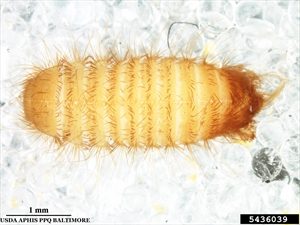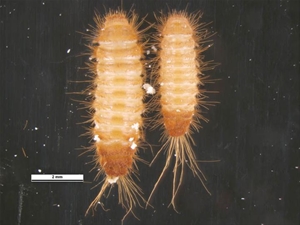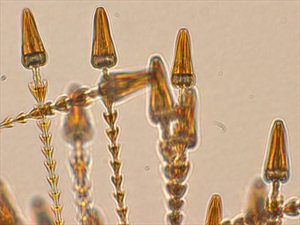-
Restricted distribution. NOT in Australia, New Zealand, nor Pacific islands. Expert identification required. Prefers hot, dry climates.
-
World’s worst pest of stored grains, nuts, pulses, processed products, and a health hazard. Spoilage from larvae: (i) feeding directly and (ii) cast skins and hairs contaminating consignments causing health and decontaminating issues.
-
Larvae reddish-brown, hairy, up to 7mm with brush-like hairs at hind end; adults, 2-3.5mm oval, reddish-brown, with fine hairs on the back. Adults suspend activity (diapause) if conditions unsuitable, for up to 9 months.
-
Spread: infested grains, and other food stuff, processed products, and animal feeds, traded domestically and internationally.
-
Biosecurity: see draft National Khapra Beetle Action Plan 2020-2030 (Australia) to manage threat: (https://haveyoursay.awe.gov.au/khapra-beetle-action-plan).
-
Cultural control: hygiene: clean walls (and fill cracks), floors, vents, bins, and use new sacks; clear up spillages; check frequently for infestations and monitor with pheromone traps.
-
Chemical control: fumigation with methyl bromide (check Montreal Protocol), phosphine, and (in Australia) sulfuryl fluoride for grain and seed storage facilities, and baled hay. Heat (60oC for 30 minutes or 42.5oC for 8 days). Malathion currently approved (in Australia) for infestations in structures and surrounding surface areas.









